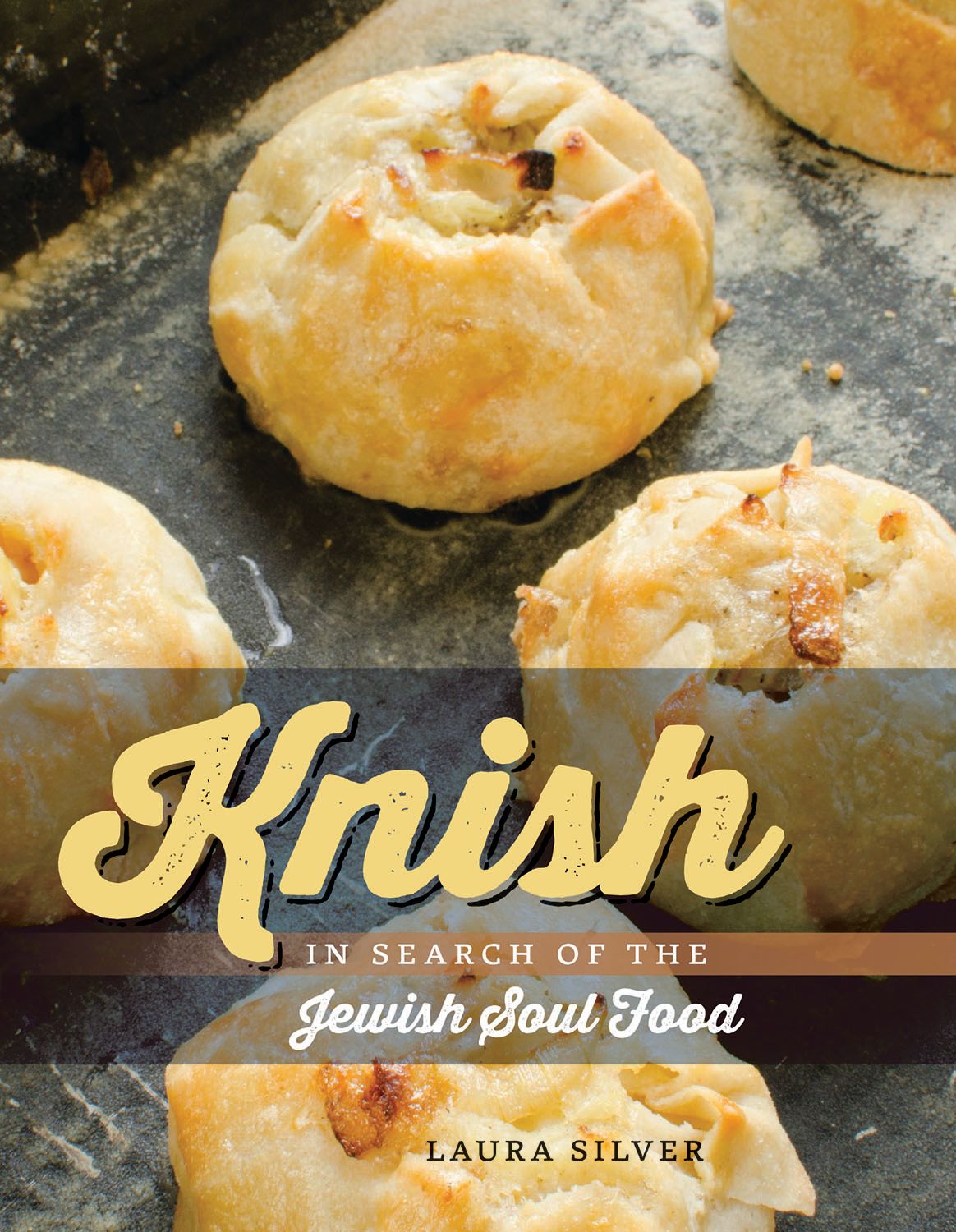From A Polish Poem To The Streets Of Brooklyn: The Story Of The Knish – And Where You Can Make The Pastry This Saturday


“If you want to have street cred, you better know about the knish,” Laura Silver told us yesterday of the pastry that she has been proclaimed the world’s leading expert on – a title well earned after traveling the globe to do research for her recently published book, “Knish: In Search Of The Jewish Soul Food.”
“My family would always get a bunch at Mrs. Stahl’s – it was a comfort food for us,” Laura said, referring to the Brighton Beach space that was a knish stronghold for 70 years before shuttering in 2006. “We’d always go with my grandmother, and after my grandmother died, I’d still go to the shop to buy knishes.”
After discovering Mrs. Stahl’s had closed, Laura, who grew up in Flushing, Queens and now lives in Park Slope, decided to go on a worldwide trek, from Brooklyn to Poland, to do research for her book and learn about hundreds of years of history of the knish – which she found to be first referenced in a Polish poem from 1614 and which emerged as the drool-inducing pastry we now know thanks to Eastern European immigrants who moved to the U.S. at the turn of the 20th century.
“Knishes are a lens to look at culture, places, and history,” she said.
This Saturday, January 10, neighbors will have a chance to glimpse some of that culture and history – as well as learn how to perfect their knish-making skills – at Temple Beth Emeth (83 Marlborough Road, by Church Avenue), where Silver will lead a knish workshop from 1:30-4pm.
All are welcome to attend – but you need to register for the event by tomorrow, January 8, to ensure there are enough supplies. You can register by emailing your name and how many adults/children you’ll be bringing to Melissa at M.scottvideo@gmail.com. Admission is $10 for an individual and $20 for a family.
Laura, an award-winning journalist who has been published in The New York Times, The Forward, NPR, and more, has spoken to neighbors at Temple Beth Emeth before – and she said she’s excited to return to dish more about the knish.
“They’re a great audience – they know their history,” she said. “… I hope they’ll take away pride in their history as New Yorkers, Jews, Brooklynites – the idea that food is never just about food – that shared knish history is about more than the knish. It’s about a shared history and a shared background – it’s a signifier of cultural beauty, and it’s something that should be treasured.”
While Brooklyn has seen many a shuttering of knish shops, like Mrs. Stahl’s, Laura said there’s an incredibly strong knish community that exists throughout Brooklyn – and the country.
“When Mrs. Stahl’s closed, I wanted to mourn with the greater knish community – but I didn’t know where to find them. Now I’ve found them,” said Laura, whose trek to learn about the knish brought her to a Polish town named Knyszyn, where she discovered her own family has roots.
And, across these places, Laura found that the knish has woven an incredibly important story – of culture, of family, of memories and history.
“It’s important for newcomers and younger people to honor that history – and what better way than with food?” she said. “And the knish – it’s a cousin to food people know – the empanada, the samosa, the Jamaican patty.
“So roll up your sleeves,” she continued. “When you make your knishes, it’s not just about food, but about what happens with people are gathered together – the conversations that come up are extraordinary. And that’s what makes Brooklyn great. That’s what we love: conversations, community and knishes.”
Even if you aren’t able to make it this Saturday, Laura was kind enough to send us this recipe for a Mrs. Stahl’s knish, which we can’t wait to try out!
Recipe: Mrs. Stahl’s Potato Knishes
Excerpted from Knish: In Search of the Jewish Soul Food by Laura Silver, published by Brandeis University Press/University Press of New England, May 6, 2014. www.upne.com www.knish.me
Fannie Stahl’s granddaughters summoned recovered memories to bring this recipe to life. Toby Engelberg, who sold her knishes in the Bay Area for a while, enlisted the help of her elder cousin from New York, Sara Spatz, who, as a young woman, worked in her grandmother’s shop in Brighton Beach. I was there to learn. What struck me most was the aroma. It filled the kitchen as soon the skins were peeled from the first onions, and lingered long after the last tray of knishes had cooled.
Dough:
3¼ cups flour
1 Tbs. sugar
1 tsp. salt
½ cup vegetable oil
1 cup lukewarm water
Turn on oven on low until dough is ready. Mix flour, sugar, and salt. Add oil and water. Mix with a spoon until the dough pulls together, or use a food processor or stand mixer (with a dough hook). Turn out the dough on board and knead it, incorporating all pieces. Knead until dough is one piece, smooth and glossy. Turn off the oven. Oil the dough and place it in oiled, covered bowl. Place in oven until you are ready to use it. Let the dough rest at least 2 hours; the dough should barely rise, if at all. Keeping the dough overnight in the refrigerator is fine. Bring it back to room temperature before use.
Potato filling:
6 lbs. russet or new potatoes
1 cup oil
¼ cup salt, or to taste
1½ tsp. pepper
8 cups thinly sliced raw onions
Scrub potatoes and peel them, unless the new potatoes have very thin, unblemished skins. Boil potatoes for about 20 minutes until knife tender, then drain. Mash with a potato masher. Add oil, salt, and pepper to taste. Mix. Stir in the onion.
Assembling and baking
Vegetable oil and flour as needed.
Preheat oven to 450 degrees.
Roll out about half the dough on a lightly floured counter or tabletop. Roll with handle-less rod-style rolling pin out from the center until dough is thin enough to see through, about 1 ⁄16-inch thick.
Oil top edge of dough with a pastry brush. Place a 2-inch-diameter line of filling about 2 inches from the top edge of the dough. Pick up top edge and drape over filling. Brush oil on dough in a 2-inch strip on the bottom edge of the filling. Pick up the dough with filling and roll again onto the oiled dough, compressing the filled dough as you turn it. Repeat until the dough covers the filling three to four times, being sure always to brush oil on the dough first. Use a knife to separate the filled potato knish log from the remaining dough. Cut off edges of filled dough. Cut the filled roll into pieces about 6 inches long and coil each piece like a snail. Tuck the remaining end into the bottom of the coil. Alternatively, place stuffed roll of dough onto ungreased cookie sheet and slash with a knife crosswise every 2 inches. Leave an inch of space between each roll or coil of dough.
Bake 20–25 minutes until the knish skin is browned and knishes are cooked through. Start knishes on lowest rack of the over and raise them to top rack after about 10–12 minutes. Let the knishes cool in pan. If you cooked the knishes in long rolls, cut them into individual pieces.
Knishes can be reheated in the oven or in a skillet on the stove top.
Makes about 18 knishes.